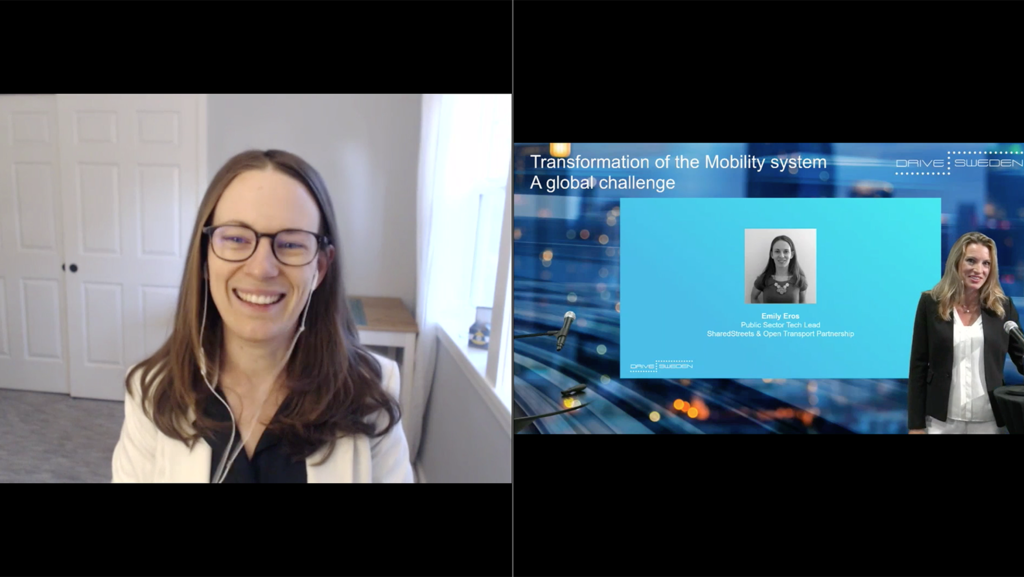Digital infrastructure powering streets, curbs and cities
Digital infrastructure is a cornerstone in developing the future mobility systems. During the Drive Sweden Forum the attendees got several updates linked to digital infrastructure, a Drive Sweden thematic area. This field has seen a massive progress in just a few years, most recently getting a boost by 5G. A new development related to this is the digitalization of the curb, which Emily Eros, Public Sector Tech Lead and SharedStreets and Open Transport Partnership, presented at the Forum.

Their organization builds open source software and digital infrastructure to support new ways of managing and sharing data to keep cities moving.
“Mobility and transportation has changed a lot and we want to make sure that city government has the information they need about how new modes of transport are operating, so that they can manage streets, plan them better and make them safer for all of us.“ says Emily Eros, Public Sector Tech Lead, SharedStreets & Open Transport Partnership.
A central problem has been that most actors have used their own maps, making it difficult to share and exchange data. Therefore, Shared Streets has created a standardized language for describing what ‘things’ are and what they look like. Once you have everyone using the same template, you can add available data from smart phones, e-scooters, ride-hailing cars, delivery companies etcetera, improving the management of the curb.
“This lets us start asking questions like: Where can I find parking? And governments can think about how they should allocate space and where to put different types of zones and at what times. Freight companies can start to think about how to make deliveries, how to figure out the most efficient route and how to avoid parking fines.” Says Emily Eros.
New collaboration between Univrses and SharedStreets
SharedStreets has recently teamed up with Drive Sweden Partner Univrses to collaborate on adding usable data in cities. Univrses has developed a 3DAI™ Engine, used in the Drive Sweden project Stockholm Virtual City, that by using camera-equipped vehicles like taxis can detect, report and map everything from snow and graffiti to potholes, constructions and damaged traffic signs – and changes to these. This data enables them to build a digital map of the city, adding to the infrastructure and empowering the users with real-time data. The data can lead to a better use of assets, improved planning, increased safety and the possibility to create simulations in an updated digital twin.
Drive Sweden has been working with digital infrastructure for a long while, through successful projects under the specific thematic area with the same title. Early on, we adopted and developed necessary technology to create Drive Sweden Innovation Cloud which provides a platform for sharing of data and enabling service innovation.
Watch the section on Digitalization of the Curb here and about Univrses introduction of their 3DAI™ engine in the US here.


